1940s
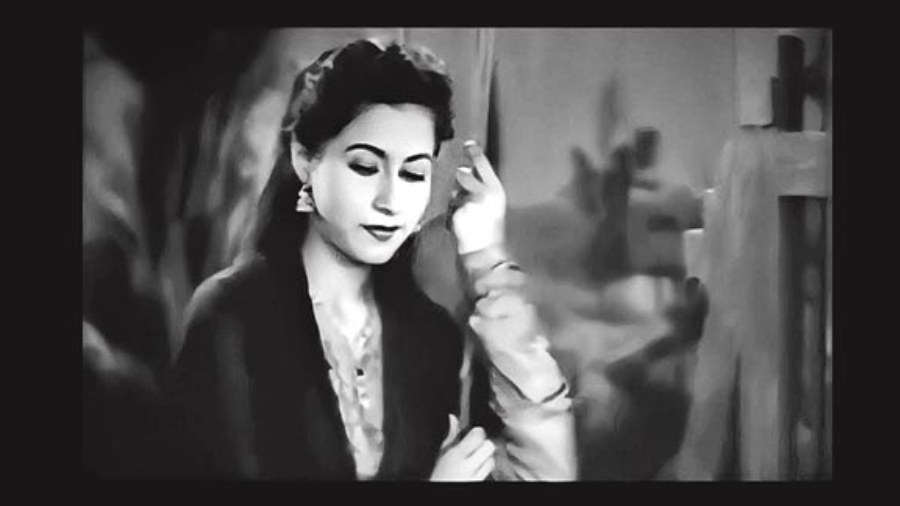
Aayega aanewaala (1949)
Film: Mahal
Losing her father, Pandit Dinanath Mangeshkar, when she was just 13, meant an early foray into a musical career for Lata Mangeshkar, where she juggled singing with small acting parts in Marathi films. She gave a glimpse of the genius that would define and redefine Indian music with a clutch of memorable melodies very early on. But it was in 1949 that the hurricane called Lata Mangeshkar was well and truly unleashed, and Hindi film music was never the same again.
One of her well-known songs from that year was Aayega aanewala from Mahal. Who can forget the ethereally beautiful Madhubala lip-syncing to this Khemchand Prakash-composed number with Lata Mangeshkar’s soulful and haunting rendition catapulting her to overnight stardom.
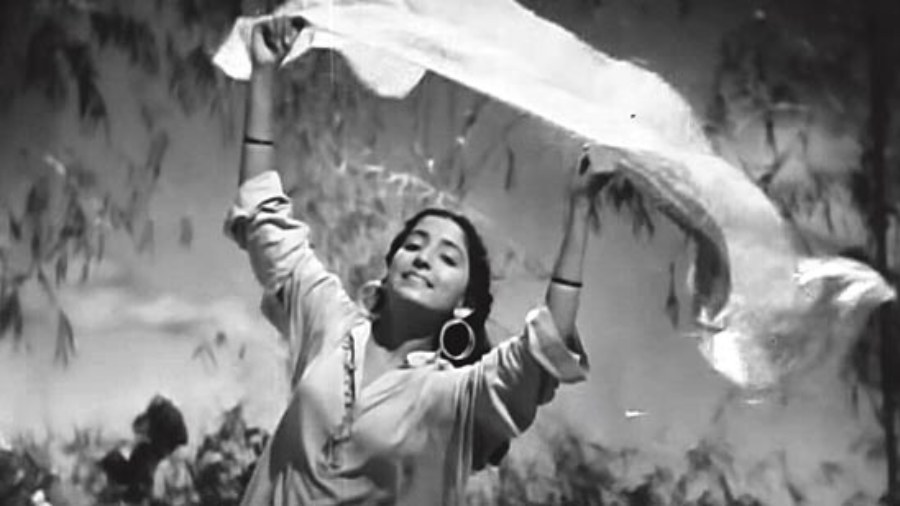
Hawa mein udta jaaye (1949)
Film: Barsaat
The film that lay the foundation for Raj Kapoor’s iconic RK Studios had Lata Mangeshkar lending her voice to both the leading ladies, Nargis and Nimmi. Hawa mein udta jaaye, picturised on the latter, is remembered as much for the Nightingale’s mellifluous voice as it is for Shankar-Jaikishan’s winning folksy strains.

Lata Mangeshkar with Mohd Rafi and Shankar of the music composer duo Shankar-Jaikishan
Uthaye jaa unke sitam (1949)
Film: Andaz
Uthaye jaa unke sitam, raised to level next by Nargis’s emotive expressions, was especially memorable, marking one of Mangeshkar’s early hits with composer Naushad, who had a huge hand to play in giving her some of her best numbers.
Laara lappa laara lappa (1949)
Film: Ek Thi Larki
Lata Mangeshkar’s playful and childlike voice was the defining force of this iconic number which has made a place in the hearts of music lovers through generations. The Punjabi song, in which she was joined by Mohammad Rafi and G.M. Durrani, became so popular that Meena, the film’s leading lady on which the number was filmed, came to be known as the ‘Laara lappa girl’. For the record, Lata Mangeshkar is believed to have sung 160-odd numbers in 1949 alone.
Baharein phir bhi aayengi (1949)
Film: Lahore
Aise door janewale dil se door na karna/ Meri aankhon ko rone par kahin majboor na karna. Lata Mangeshkar brought alive these beautiful words in this memorable number picturised on Nargis that was one of the earliest Hindi films that touched upon the after-effects of Partition.
1950s
Mohe bhool gaye saawariya (1952)
Film: Baiju Bawra
The 1950s marked a visible change in the kind of songs the Nightingale lent her voice to, with her pitch-perfect pronunciation coming in for special notice. She continued collaborating with great success with composers like Naushad and Sajjad Hussain, with Anil Biswas emerging as a mentor of sorts. Lata Mangeshkar’s solid roots in classical music became a defining trait of many of the songs she sang during this decade, with Mohe bhool gaye saawariya, a pathos-laden composition in Raag Bhairav, benefiting immensely from her honey-dipped voice.
Yaad kiya dil ne (1953)
Film: Patita
Shankar-Jaikishan’s beautifully composed number remains on the list of most music lovers, with Lata Mangeshkar and Hemant Kumar lending it tone and texture. For many, one of the best romantic songs of the decade.
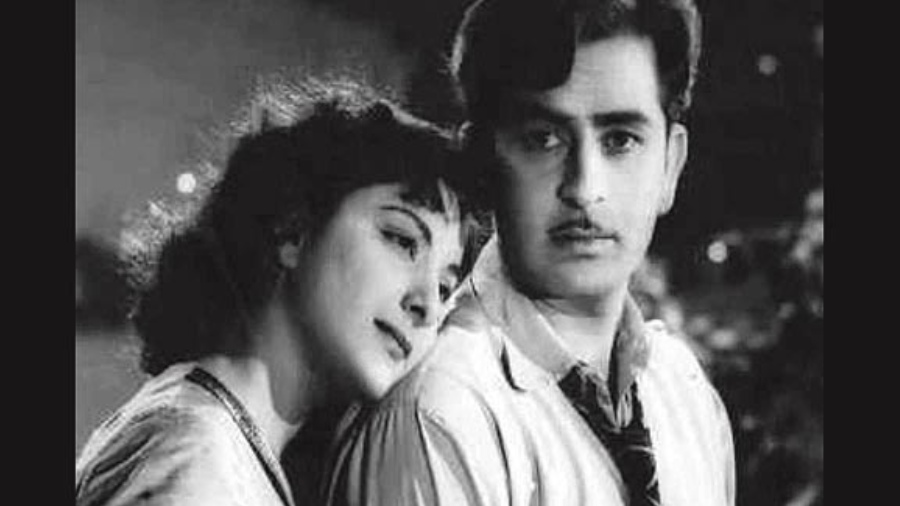
Aaja sanam (1956)
Film: Chori Chori
Lata Mangeshkar. Manna Dey. Shankar-Jaikishan. The golden pair of Raj Kapoor and Nargis. Aaja sanam madhur chandni mein hum tum mile toh veeraney mein bhi aa jaayegi bahaar....
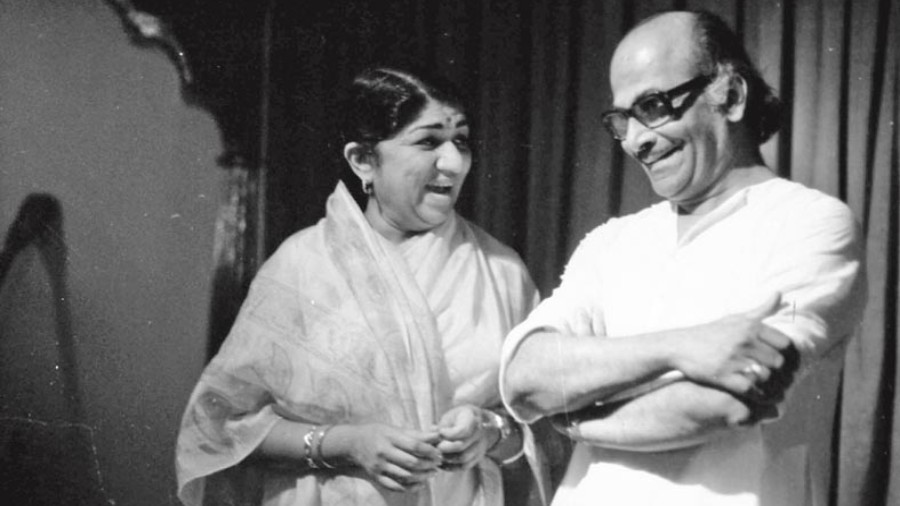
With Salil Chowdhury
Aaja re pardesi (1958)
Film: Madhumati
The Madhumati OST features 11 tracks composed by Salil Chowdhury. Lata Mangeshkar was the chosen one for some of the most iconic songs in this seminal film on reincarnation, directed by Bimal Roy. We are spoilt for choice with Dil tadap tadap ke keh raha (with Mukesh), Chadh gayo paapi bichhua (with the inimitable Manna Dey) and her solo numbers Ghadi ghadi mera dil dhadke and Zulmi sang aankh ladi re.... We pick the mysterious and melancholic Aaja re pardesi. Main toh kab se khari iss paar/ Yeh ankhiyaan thak gayi panth nihaar.... Beautiful song enhanced by a beautiful voice.
Thandi hawayein (1951)
Film: Naujawan
S.D. Burman played an important role in transforming Lata Mangeshkar’s voice in the 1950s. This was most evident in the hauntingly melodious Thandi hawayein, picturised on Nalini Jaywant, that remains a characterising number representing freedom of the mind and soul.
1960s

Ajeeb dastaan hai yeh (1960)
Film: Dil Apna aur Preet Parai
Which Hindi film music buff hasn’t been touched by the playfulness and pathos of Ajeeb dastaan hai yeh? Employing a choral background, similar to what Salil Chowdhury did in many of his songs, the Shankar-Jaikishan number — picturised on an ethereal Meena Kumari on a boat — remains an eternal gem.
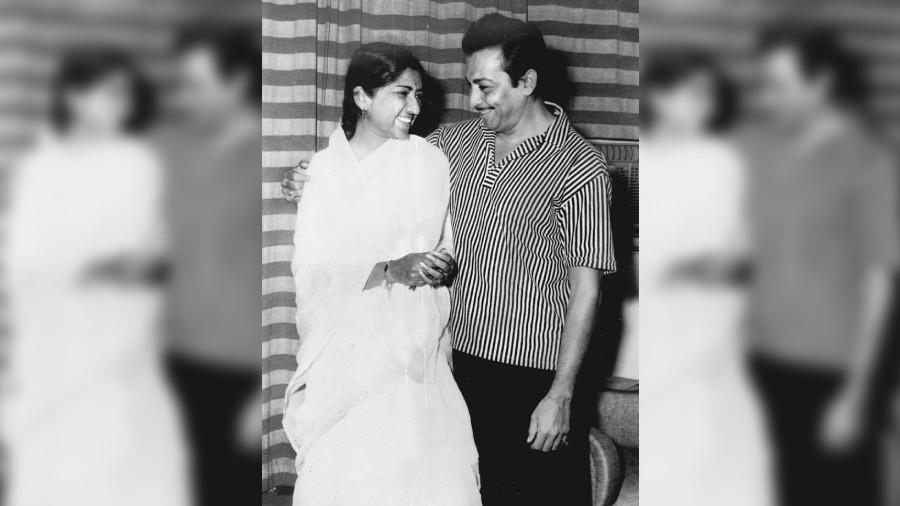
With Madan Mohan
Lag jaa gale & Naina barse (1964)
Film: Woh Kaun Thi?
Again an album completely dominated by Lata Mangeshkar (sister Asha Bhosle chipped in with two other numbers), Woh Kaun Thi? had Madan Mohan scoring enduring numbers like Lag jaa gale and Naina barse, both rendered magically by the queen of melody.
Allah tero naam (1961)
Film: Hum Dono
Jaidev’s music and Sahir Ludhianvi’s soulful words were rendered with both feel and fervour by Lata Mangeshkar. Vintage Nightingale.

Mera saaya (1966)
Film: Mera Saaya
Raj Khosla’s psychological thriller benefited from a heart-touching album, with the title song and the hauntingly memorable Naino mein badra chhaye both being lifted several notches by the magic in Lata Mangeshkar’s voice.
O sajna barkha bahaar aayi (1960)
Film: Parakh
Yet another Salil Chowdhury masterpiece in a Bimal Roy film, this number represents the purity and perfection in Mangeshkar’s voice, free flowing and unbridled like a river.
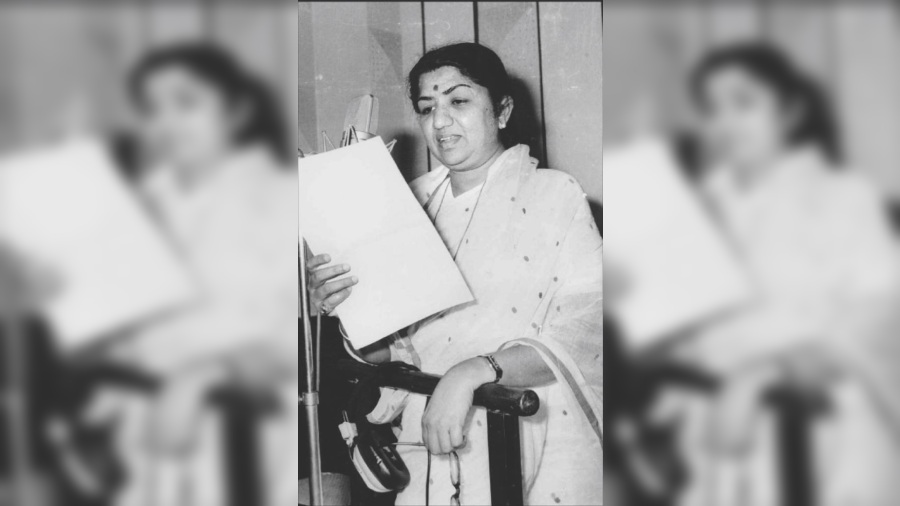
Ae mere watan ke logon
Perhaps one of the most definitive Lata Mangeshkar songs in a career defined by unending masterpieces, this number is special because it commemorates Indian soldiers who died during the Sino-Indian War in 1962. Written by Kavi Pradeep and composed by C. Ramchandra, Ae mere watan ke logon was performed live by Mangeshkar at the Republic Day celebrations in 1963 in the presence of President S. Radhakrishnan and Prime Minister Jawaharlal Nehru. Ae mere watan ke logon remains one of India’s most popular patriotic songs.
1970s

Chalte chalte (1972)
Film: Pakeezah
It’s tough to choose a single number from this definitive musical, which marked a career-defining turn from Meena Kumari. We go with the mellifluous Chalte chalte, composed by Ghulam Mohammad and written by Kaifi Azmi. Inhi logon ne to Chalo dildar chalo to Thade rahiyo... so many Lata Mangeshkar numbers in Pakeezah remain memorable.
Iss mod se jaate hain (1972)
Film: Aandhi
Again, a Lata-dominated album, which had her scoring some memorable duets with Kishore Kumar, with R.D. Burman’s music remaining one of Hindi cinema’s best of all time. Iss mod se jaate hain is the one we are leaning towards, but how does one not mention Tere bina zindagi se or Tum aa gaye ho noor aa gaya hain?
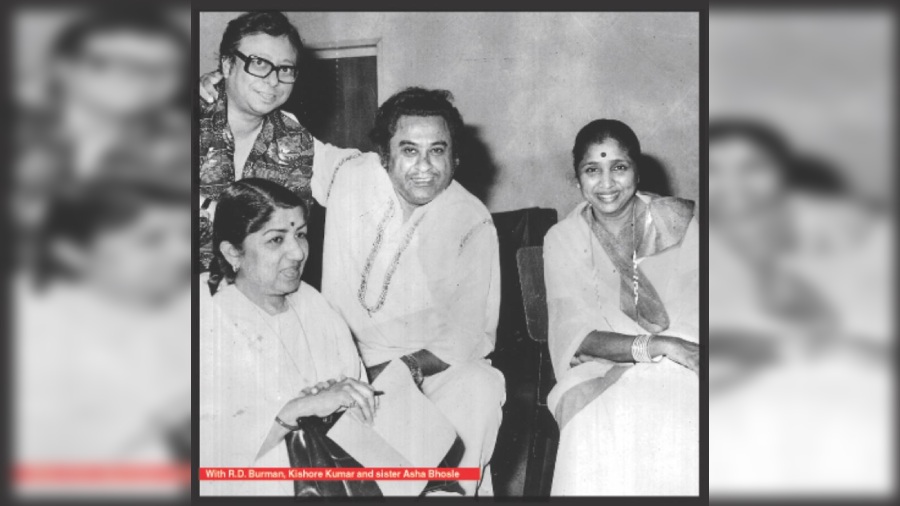
With R.D. Burman and Kishore Kumar and sister Asha Bhosle
Raina beeti jaaye (1972)
Film: Amar Prem
Yet another classic album of the 1970s rendered magical by the combination of Lata Mangeshkar, R.D. Burman and Kishore Kumar. The pick of the Amar Prem soundtrack for us is Raina beeti jaaye, set in the blend of two ragas, Todi in mukhara and Khamaj in antara. And, of course, rendered effortlessly by Lata Mangeshkar.

Piya bina piya bina (1973)
Film: Abhimaan
Again, a spoilt-for-choice album, with S.D. Burman and Majrooh Sultanpuri making magic, supported by the melodious voices of Lata and Kishore. We pick the classic Piya bina, brought alive on screen by Jaya Bhaduri, but the truth is that we are leaning towards every Lata song in this masterpiece — Ab toh hain tumse har khushi apni to Lootein koi mann ka nagar, Nadiya kinare to Tere mere milan ki yeh raina....
Beeti na bitai raina (1972)
Film: Parichay
Lata Mangeshkar won one of her three National Awards for this evergreen number from Parichay, scored by R.D. Burman and written by Gulzar. It hardly gets better than Beeti na bitai raina/ Birha ki jaai raina/ Bheegi hui akhiyon ne
laakh bujhaai raina in the Nightingale’s voice....
Aaj kal paon zameen par (1978)
Film: Ghar
We pick an additional song in this decade because there is Lata Mangeshkar... and then there is Lata Mangeshkar in Ghar. Rekha’s presence in Aaj kal paon zameen par is enhanced by Mangeshkar’s melodious voice. And then, of course, are the other Ghar classics — Aapki aankhon mein kuch mehke hue se raaz hain and Tere bina jiya jaaye na, both duets with Kishore Kumar.
1980s
Aye dil-e-nadaan (1983)
Film: Razia Sultan
Composed by Khayyam, and rendered with thehraav by Lata Mangeshkar, this song filmed on Hema Malini who played the title role, is an evergreen classic. On Sunday, Hema Malini, shortly after Mangeshkar’s demise, tweeted: “It is a personal loss for me as our affection and admiration for each other was mutual”.
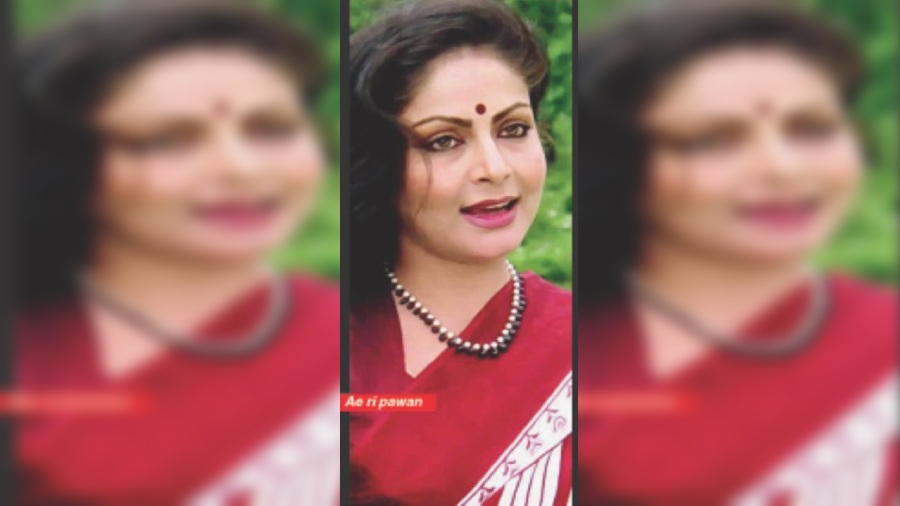
Ae ri pawan (1982)
Film: Bemisaal
There is something about Lata Mangeshkar singing Ae ri pawan, dhoondey kisey tera mann chalte chalte that makes one believe in the healing power of music. Another gem from the Lata-R.D. combine.
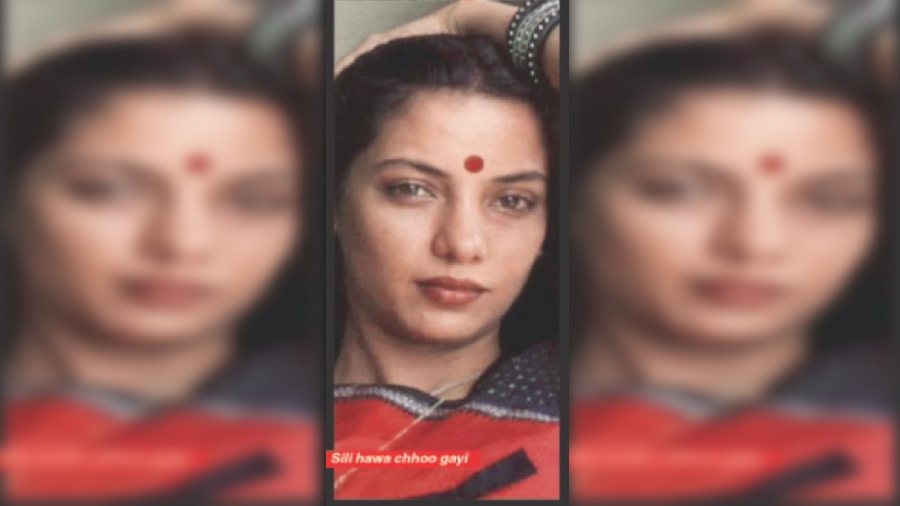
Sili hawa chhoo gayi (1988)
Film: Libaas
This number makes it to the list because it truly captures the ethos of the Lata Mangeshkar voice — powerful, poignant, poetic and pure.
Tujhse naaraaz nahin zindagi (1983)
Film: Masoom
We are fans of both the male version (sung by Anup Ghoshal) and the female solo, rendered magically by Lata Mangeshkar. For many, there is nothing quite like the queen of melody going Tujhse naaraaz nahi zindagi/ Hairaan hoon main/ Tere masoom sawalon se/ Pareshaan hoon main. Pure magic, once again by both Lata and R.D.
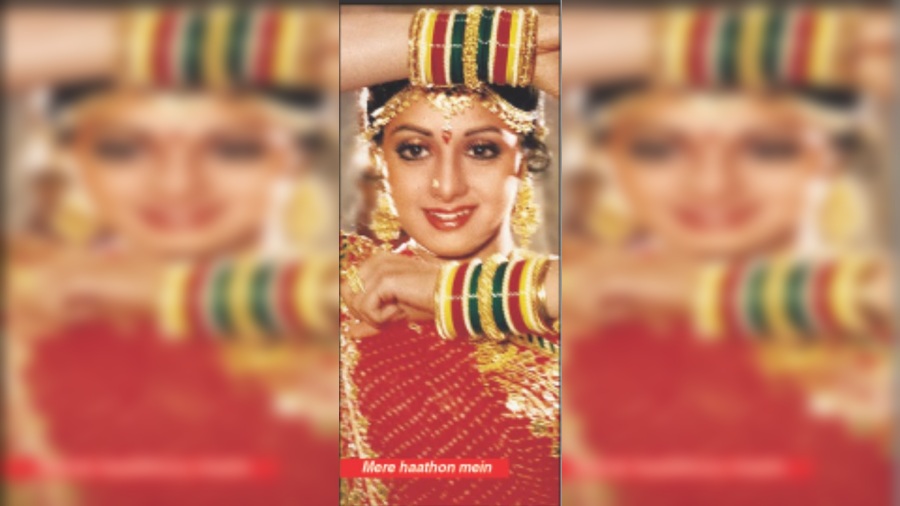
Mere haathon mein (1983)
Film: Chandni
Sridevi’s luminous eyes loom large whenever we think of this number, but would Mere haathon mein nau nau choodiyan hain/ Thoda thehro sajan majbooriyan hain be as compelling a listen (and watch) if it wasn’t for Lata Didi and her age-defying voice?
1990s
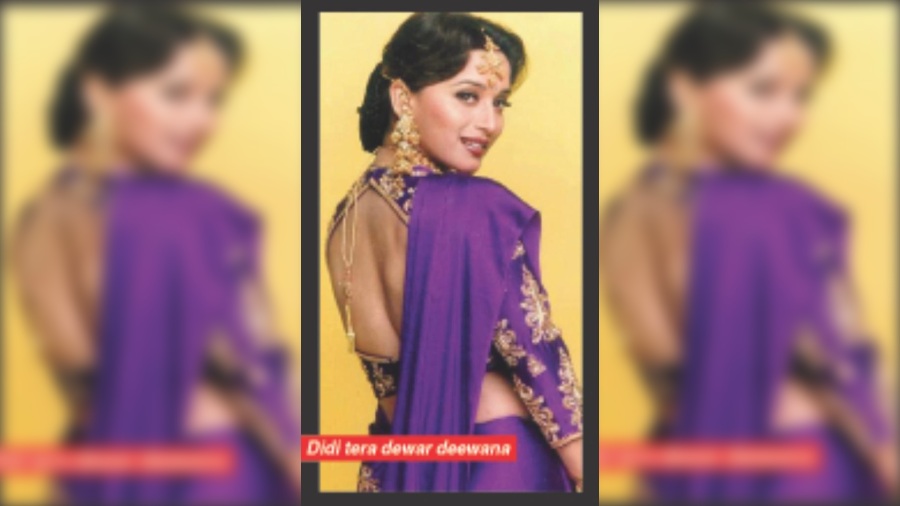
Didi tera dewar deewana (1993)
Film: Hum Aapke Hain Koun..!
Even in her mid-60s, Lata Mangeshkar’s versatility and vivaciousness in this popular number from one of the biggest hits of the ’90s couldn’t be matched by anyone even decades younger than her. The fact that she had longtime collaborator S.P. Balasubrahmanyam for company only added to the magic and melody of Didi tera dewar deewana.
Mere khwabon mein (1995)
Film: Dilwale Dulhania Le Jayenge
Even as younger voices made an entry, Lata Mangeshkar continued to rule the hearts of Hindi film music buffs. Few could have captured the playful mood and magic of this Jatin-Lalit number, with Kajol’s vivaciousness adding to it, like Mangeshkar.
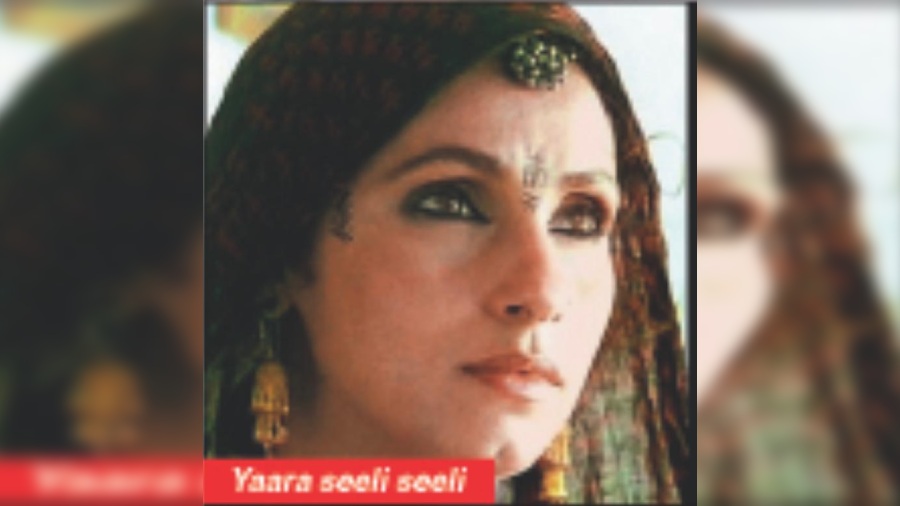
Yaara seeli seeli (1991)
Film: Lekin...
This film directed by Gulzar was produced by Lata Mangeshkar whose soulful rendition of the classic Yara seeli seeli remains firmly etched in the annals of Hindi film music. She won a National Award for this song that was picturised on Dimple Kapadia.
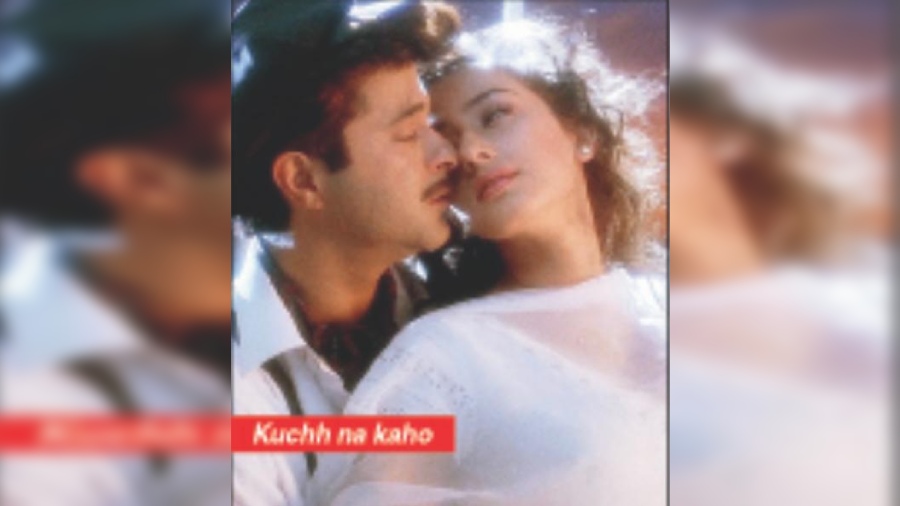
Kuchh na kaho (1994)
Film: 1942: A Love Story
R.D. Burman’s last film had Lata Mangeshkar weaving magic with tone, tune and texture in this gorgeously written and scored number whose popularity endures.
Paani paani re (1996)
Film: Maachis
This Vishal Bhardwaj composition in Gulzar’s seminal film that captured love and loss, despair and displacement, was lifted several notches by Lata Mangeshkar in the way only she could. Tabu’s eyes took care of the rest.
2000s

Luka chuppi (2006)
Film: Rang De Basanti
One of the last numbers sung by the legend — scored by Rahman and poignantly picturised on a mother bidding a final farewell to her young son — still gives us goosebumps. As does every Lata Mangeshkar song. Today and forever.
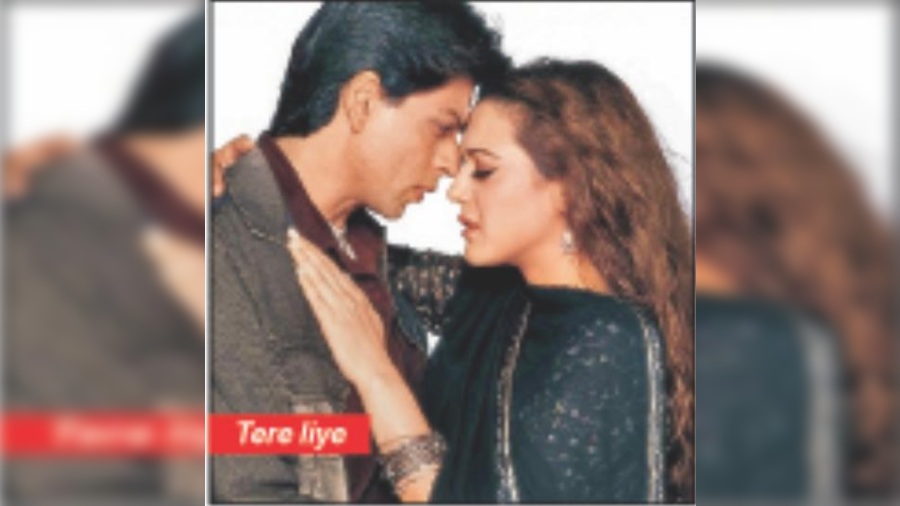
Tere liye (2004)
Film: Veer-Zaara
The Veer-Zaara album comprises songs composed by Madan Mohan and used decades later in this Yash Chopra-directed film. While Lata Mangeshkar sang a host of numbers in this film — Do pal is a firm favourite — we pick Tere liye in the Nightingale’s voice that remains a blissful listen, each time and every time.
O paalanhaare (2001)
Film: Lagaan
In the 2000s, many an A.R. Rahman-composed number found its way to the top of the charts through Lata Mangeshkar’s voice. O paalanhaare, a powerful and poignant number from Lagaan, is one of their many collaborations which invariably finds its way into many a playlist.
Humko humise chura lo (2001)
Film: Mohabbatein
Humko humise chura lo — composed by Jatin-Lalit and sung by Lata Mangeshkar — remains a romantic favourite for many, even more than two decades after it first made its way to our screens.
Ek tu hi bharosa (2000)
Film: Pukar
Filmed on Lata Mangeshkar herself and scored by Rahman, Ek tu hi bharosa arrives in the penultimate moments of Pukar and lifts the film several notches.
